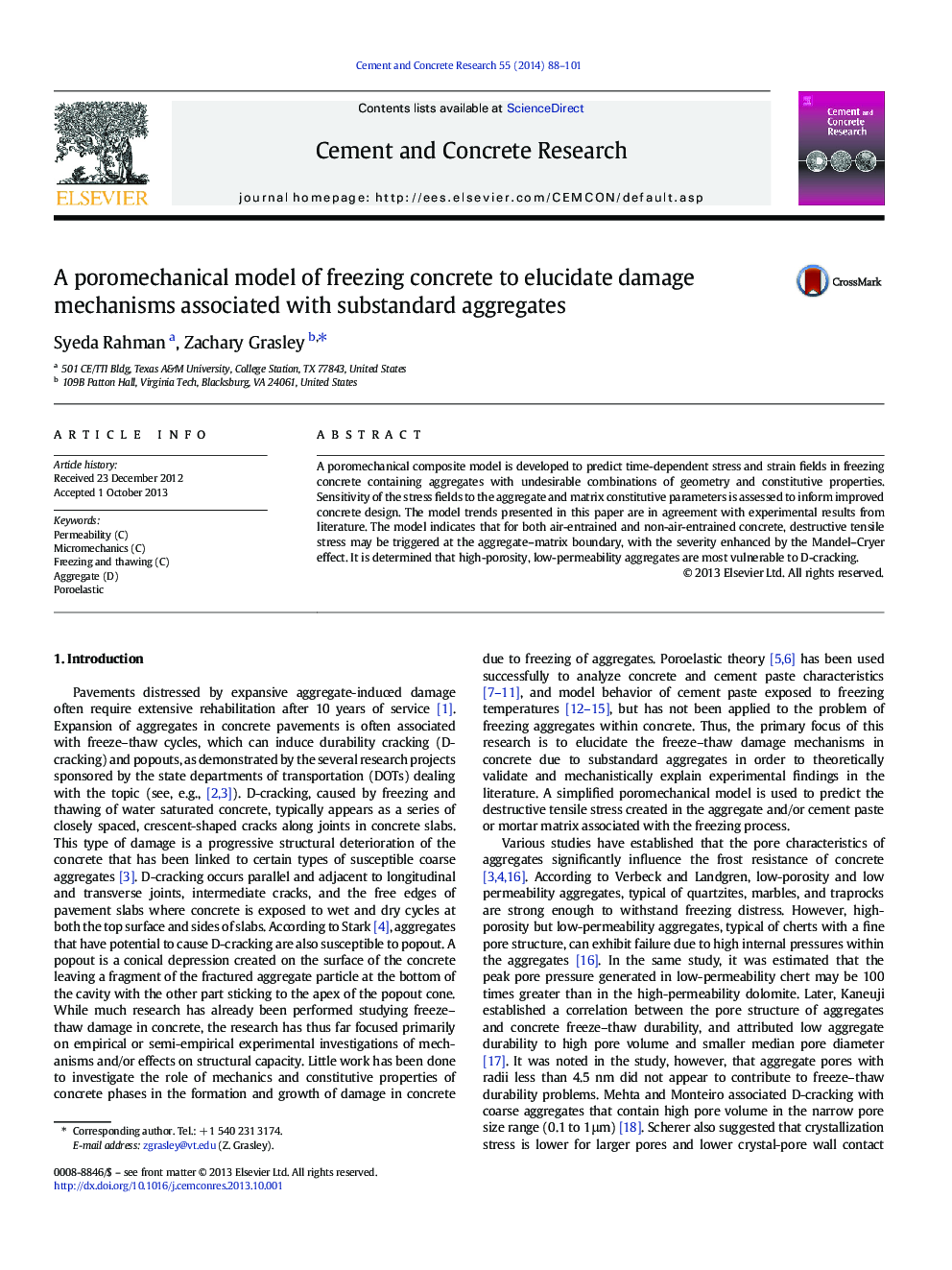| Article ID | Journal | Published Year | Pages | File Type |
|---|---|---|---|---|
| 1456343 | Cement and Concrete Research | 2014 | 14 Pages |
•D-cracking in concrete is simulated via a poroelastic model.•Differential pore fluid pressure creates high stress in aggregate.•Mandel–Cryer effect exacerbates stresses in aggregate.•As with experiments, large, low permeability aggregates are most damage-susceptible.•Simulations indicate that lightweight aggregates reduce freezing stresses.
A poromechanical composite model is developed to predict time-dependent stress and strain fields in freezing concrete containing aggregates with undesirable combinations of geometry and constitutive properties. Sensitivity of the stress fields to the aggregate and matrix constitutive parameters is assessed to inform improved concrete design. The model trends presented in this paper are in agreement with experimental results from literature. The model indicates that for both air-entrained and non-air-entrained concrete, destructive tensile stress may be triggered at the aggregate–matrix boundary, with the severity enhanced by the Mandel–Cryer effect. It is determined that high-porosity, low-permeability aggregates are most vulnerable to D-cracking.
